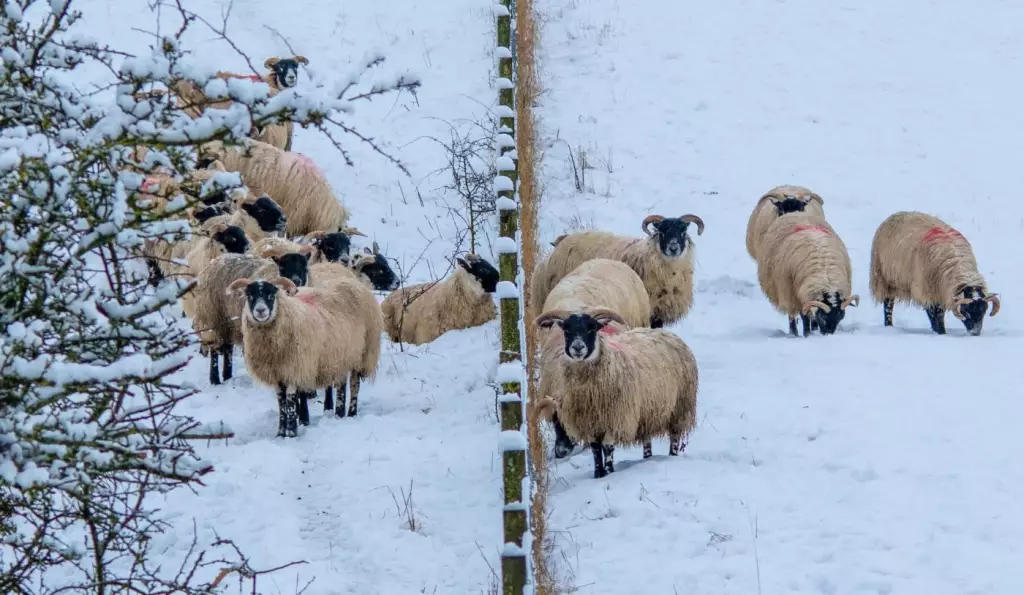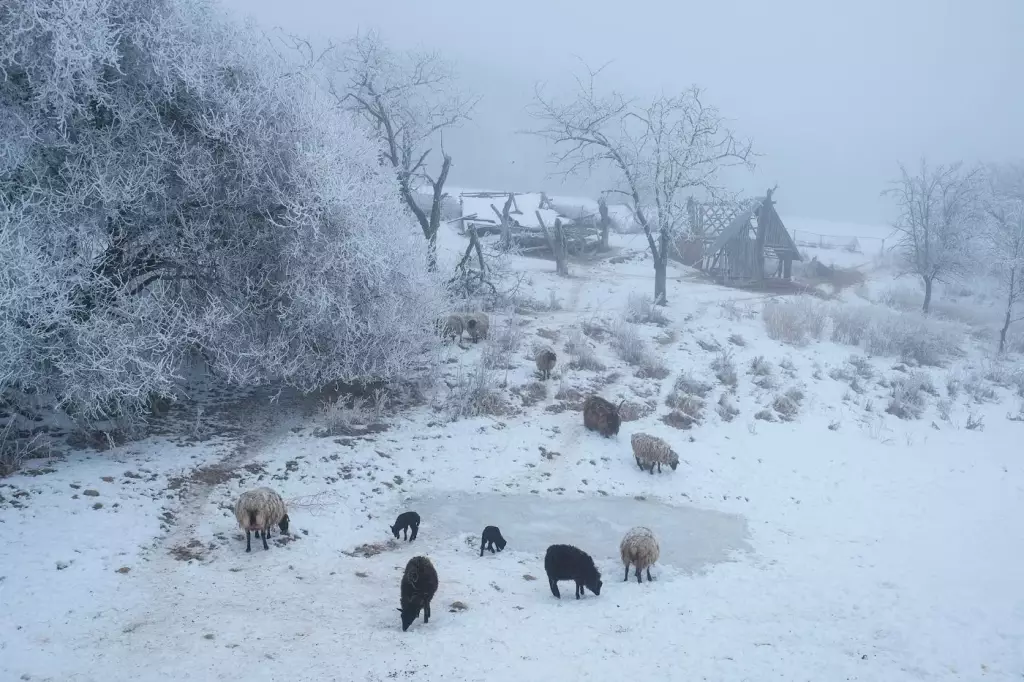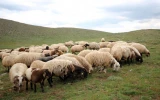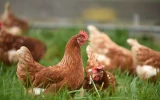How Many Sheep Per Acre When Winter Grazing?
Sheep farming has increased due to the demand for milk, meat, and wool. If you want to raise sheep but have only a small acre of land, it’s essential to know how much space you’ll need to allocate for these animals, especially because they need a grazing area. Let's find out how many sheep you can keep per acre during winter grazing.
The standard number of sheep kept per acre for winter grazing is approximately six to ten sheep. If you plan to take more sheep on an acre of land, you must regularly rotate your fields and provide extra roughage like hay, since they can quickly eat down an acre of grass.
While the specific numbers are at least 6 to 10 sheep per acre, this stocking density varies according to climate, topography, and grass quality. This article dives into the details of the considerations that must be taken into account regarding sheep space requirements.
Summary
- During winter grazing, the required number of sheep is at least 6–10 sheep per acre.
- Intensive winter grazing can lead to overgrazing, which is why farmers have to determine the balanced number of sheep per space.
- The density of sheep in an area can be influenced by grass quality, climate, topography, and a number of other factors.

On this page:
Six to Ten Sheep are Required Per Acre During Winter Grazing
For sheep, the typical stocking density on pasture must be approximately six to ten sheep per acre. Stocking density, however, varies according to climate, topography, and grass quality.
In some cases, an acre of land can sustain up to 8–10 sheep, given that regular rotational grazing is practiced and hay is provided to be fed in between. Note that keeping 10 sheep per acre can quickly consume the grass. To slow down the process, a farmer must spend money to buy more grains and hay to be fed in between, avoiding overgrazing.
Winter grazing is part of an integrated crop-livestock system wherein livestock, such as sheep, are allowed to graze a crop field of annual forage crops during winter. It is usually practiced in areas with mild winter seasons. Instead of feeding the flock cash crops, farmers allow their flock to eat the cover crop that was planted to grow over the winter.
This practice is useful to farmers as it is cost-efficient and sustainable. It also improves the metabolic condition of the sheep as they transition from eating crops to grass. It also has minimal damage or effect on soil health.

The problem with winter grazing, however, is that if done poorly or too much, it can result in overgrazing, which has detrimental effects on animal welfare and the environment. While grazing livestock on frozen soil usually causes minimal pasture damage, grazing pasture when the soil is wet can lead to soil erosion and have a long-term negative effect on pasture.
Farmers who keep livestock on pasture must consider potential soil erosion during winter grazing. They must have an integrated plan for rotational grazing during the winter. They must remove their livestock completely from the pasture to give the grasses in the soil the opportunity to recuperate and grow.
For the above reasons, one must know how many animals should be maintained per acre to prevent overgrazing during winter.
Space Requirements for Sheep in Pasture
There is no definite answer to how much space is needed by sheep when they are kept in the pasture. Few factors influence how many sheep can happily thrive in a space. The key to finding the balance is to apply the general guidelines and adjust from there.
You can start small and keep two sheep on one acre of land. Observe them during the winter season, and if they survive, you could then add more sheep to that space.
The general rule, however, is to keep one sheep in at least 15 square feet. Pasture-fed sheep, however, require half an acre per sheep in accordance with the general rule of a minimum of one acre for two sheep.
One acre can accommodate anywhere from two to ten sheep, depending on grass conditions and availability. This number can be influenced by climate, soil quality, fertilizers, and drainage factors.
Below is a table that shows how much space is required per number of sheep:
| Sheep Count | Required Space |
|---|---|
| 1 sheep | ½ acre |
| 2 - 10 sheep | 1 acre |
| 10 – 50 sheep | 5 acres |
| 100 sheep | 10 acres |
Considerations when keeping your sheep in a pasture
-
Good fencing is required if you plan to keep your sheep on pasture. They are good escapers and can find even a small gap to get out of. To keep them safe, make sure they have good, maintained confinement.
-
Ensuring flock safety is also a top priority when you let sheep in the pasture. Sheep are not good defenders and can easily be preyed on. For this reason, securing sturdy fences are a must.
-
Have a safe barn space for lambing. Lambs are more vulnerable to poor weather conditions, and to prevent losses at birth, a barn space where you can put the young sheep is still required.
-
Account for winter months. Although you already have a fixed number of sheep grazing off an area of pasture during the warm season, you may want to reassess their number during the winter months. Less grass will be available during winter, so to cope, you must keep your number of sheep low in one area.
This is also to avoid overgrazing and to have enough grass to last your sheep the winter. During this time, you must also provide supplementary feed like hay or grains.

- Apply an integrated rotational grazing plan. Rotational grazing or rotating your sheep from paddock to paddock will increase the quality and quantity of your pasture. A good quality pasture can help you keep a larger number of sheep in a smaller space.
Rotational grazing also allows your sheep to graze and fertilize each paddock well and move them before they could overgraze and damage the roots of the forages in your fields.
A pasture program for a 100-ewe flock has been devised by researchers from Purdue University. A 30-acre land is subdivided into 3 10-acre fields, and each field has a suggested sheep stocking rate of 10 ewes and 15 lambs per acre. You can integrate this rotational grazing plan in your small acre land too.
Other considerations for sheep space requirements
Aside from accounting for the climate and quality of forage available in your area, other determining factors that influence the number of sheep allowable in a space are the following:
Size of sheep
Smaller varieties of sheep will consume less grass, which means you will have room for more sheep in an acre.
Grazing period
The difference in climate accounts for the difference in how long the sheep can graze. Typically, sheep in cooler climates will graze later into the morning, and earlier in the afternoons, while flocks in extreme heat conditions will seek shelter and shade for most of the day, therefore grazing only for a shorter period.
Topography
The terrains in your pasture define the efficacy of grazing. Smooth, flat pastureland with access to fresh water available allow sheep flock to graze more efficiently compared to rough, hilly terrain with limited water access.



